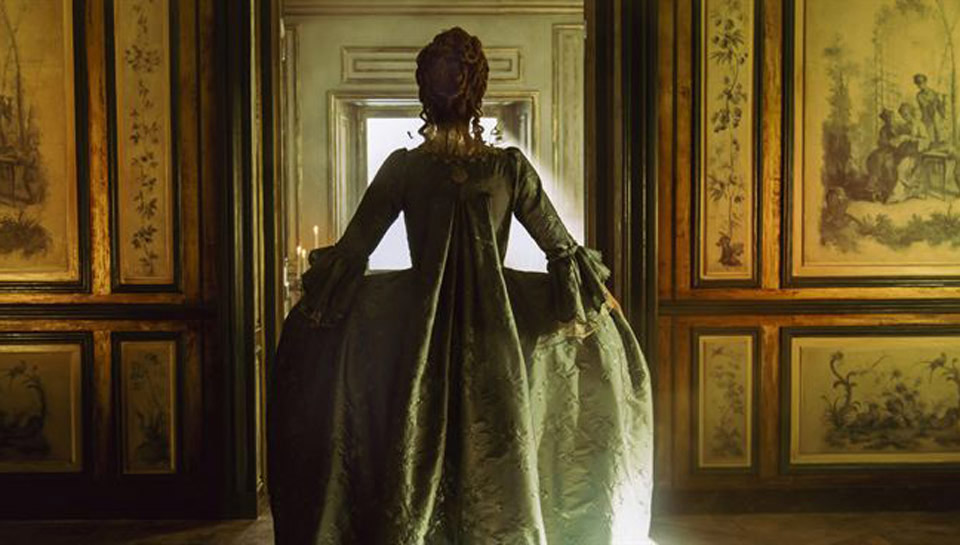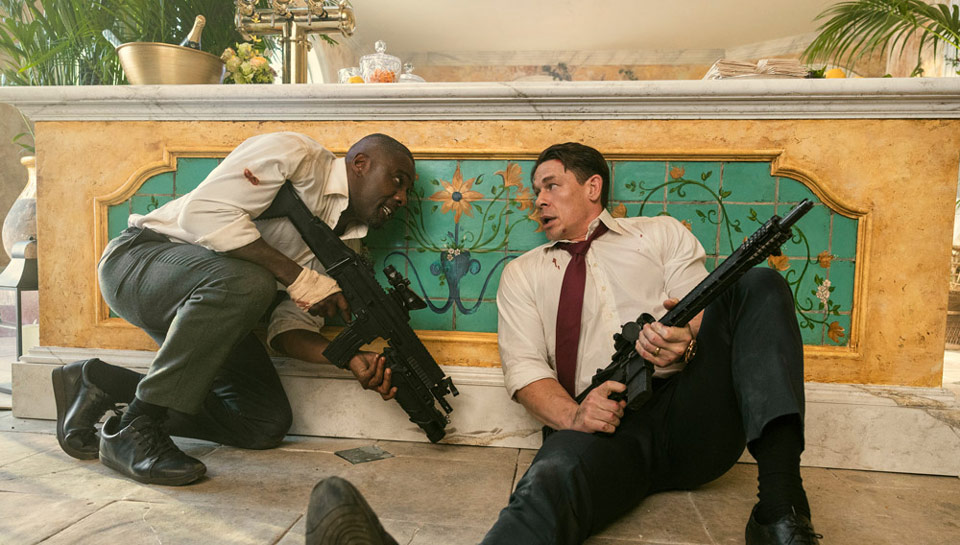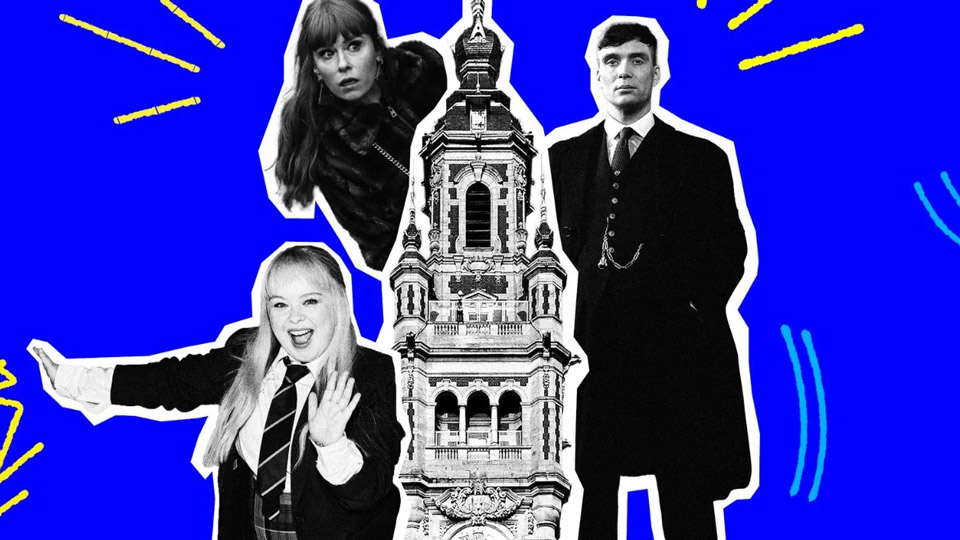Where did you shoot the series exactly?
We shot in five or six different castles, at least! Including of course the Palace of Versailles. You need to know that filming at Versailles is quite complicated. You can only work there one day a week, on Mondays, with limited access. You can neither move anything, nor touch anything. It's quite tricky and this is the reason why we had to recreate in the studio, on two sets, part of Marie-Antoinette’s private chambers and the king’s state apartment.
How did you contemplate these reenactments? Did you try to reproduce everything exactly?
We tried to preserve the essence of Versailles, its spirit. Of course, we respected the ground rules but the truly interesting thing on which we worked in these private rooms was the hidden part: a multitude of small secret corridors leading to secret rooms. It is quite surprising when that far in your mind, it all came down to the state rooms! Behind, there are actually small apartments, 15-square-meter rooms with small, narrow and winding corridors. We tried to display this very private atmosphere on screen, to recapture this somewhat secret spirit...
We assume it all started beforehand with a great deal of documentation work...
There is a comprehensive iconographic work to do that involves research. We read a lot of books, we search libraries to find images and have substantial resources. These images, which represent each place, decor by decor, are grouped together and then we can move on to the drawings and outlines.
All these rooms are composed of a huge number of details. Is that the trickiest thing to replicate?
Yes… When you see all this work – the moldings, gilding… you shouldn't try to simplify, because that's also what Versailles represents. We worked in two dimensions: to reproduce these details, we created trompe-l’œil moldings with painted shadows rather than manufacturing actual reliefs. This makes it possible to render the lavishness of Versailles, while shortening the set building.
Is it possible to bring a certain historical truth to the screen?
Today the Palace of Versailles is perfectly shining. It is very well maintained. The walls are repainted regularly. It's very clean. Whereas in the 18th century, it accommodated 2,500 people all year round! People who ate, relieved themselves... Food was served everywhere: the guests had greasy hands, put them on door handles, on walls! And of course they would build a fire to heat and use candles to light the residence. You have to imagine the amount of soot and grime that was produced continuously. This patina no longer exists at all today. We gently tried to get it back in the studio in order to create something more realistic that transforms the place into an inhabited residence and takes away the museum aspect. It was very exciting to try to deface the Palace of Versailles, to make it look the way I imagined it to be in the 18th century…
While taking a very careful look at continuity errors…
Indeed, and this also limits us since studio shoots must match location shoots. Thus, I couldn't bring too much patina and black soot into the studio; there would have been too big a difference between fact and fiction.
What about the furniture?
We hunt: antique dealers, flea markets in Saint-Ouen (a Parisian institution)... We also ask professional rental companies specialized in the movie industry and even browse Leboncoin (the French leading classified site for private sales)! But there is more flexibility when it comes to furniture. For example, we allowed ourselves to put Louis XVI pieces of furniture in the Palace, even though the king was still very young when the series begins. It's a small unnoticeable anachronism that we allow ourselves, because all the Louis XV furniture is obviously quite expensive.
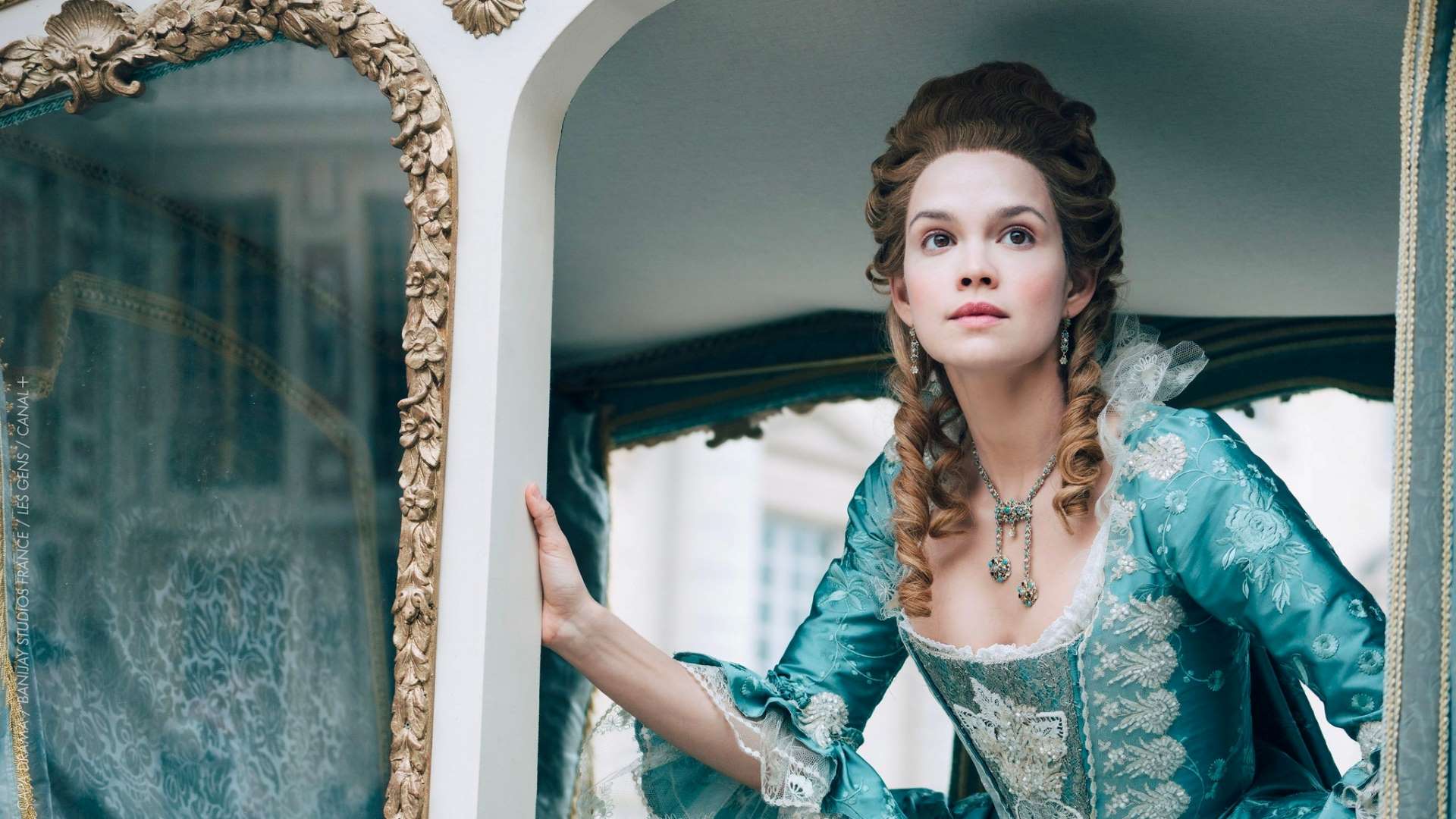
Did you have your say in picking the other castles and filming locations?
First and foremost, there is a financial framework to respect, some castles being too expensive to transform. Otherwise, I actually have my say since I have to ensure consistency, create the illusion that we are still at Versailles, even if we are filming in another castle. A delicate task.
In the end, isn’t it easier to work on such opulent and iconic decors when you are a production designer?
Not necessarily. In a sense, we are prisoners of a famous place, in this case the Palace of Versailles, and of an era. In this kind of production, directors of photography and their teams are limited in terms of artistic choices. Giving the illusion of being at Versailles remains very exciting in the heat of the moment. But afterwards, you tell yourself you’re not going to reenlist right away. (Laughs.)
You had designed sets for another Canal+ historical series, Paris Police 1900. Did that inspire you for Marie-Antoinette?
No, the two projects don’t have any similarities. They are actually diametrically opposed: everything had to be created from scratch for Paris Police 1900, which takes place at the beginning of the 20th century. The artistic range is much greater. It is a much richer and more interesting material with which we can take the liberty of being a lot more creative.
Marie-Antoinette, 8 episodes / 52 minutes – on Canal+ from October 31
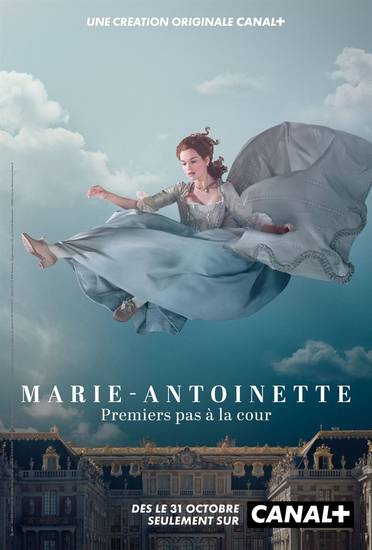
Written by Deborah DAVIS, Louise IRONSIDE, Chloe MOSS and Avril E. RUSSELL
Directed by Pete TRAVIS and Geoffrey ENTHOVEN
With Emilia SCHÜLE, Louis CUNNINGHAM, James PUREFOY, Jack ARCHER, Jasmine BLACKBOROW, Gaia WEISS, Crystal SHEPHERD-CROSS, Caroline PIETTE, Oscar LESAGE, Roxane DURAN, Liah O'PREY, Jonas BLOQUET, Marthe KELLER, Nathan WILLCOCKS, Laura BENSON, Yoli FULLER, Martijn LAKEMEIER, …
Original music by Guillaume ROUSSEL
Additional original music by Guillaume ROUSSEL, Clémentine CHARUEL and Michael LOFASO
Produced by Claude CHELLI, Stéphanie CHARTREUX and Margaux BALSAN
Produced by Deborah DAVIS
A CANAL+ original series
Produced by Capa Drama, Banijay Studios France, Les Gens
With the support of the Centre National du cinéma et de l’image animée
With the support of the Ile-de-France region
With the support of CINE+ and CANAL+ Poland
With the support of the Brussels-Capital region
With the support of the Belgian Tax Shelter


